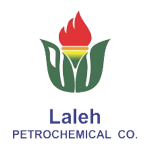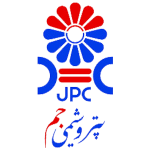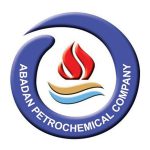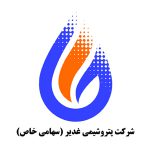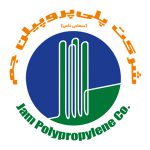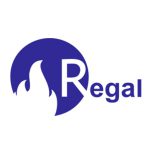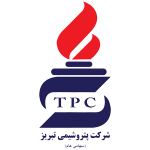PVC
Polyvinyl Chloride (PVC) Polyvinyl chloride (PVC) is a thermoplastic with high durability, hardness, and resistance to corrosion and chemicals. Initially produced as a white powder, this material may undergo additional processes depending on the intended application. Due to its excellent resistance to water, acids, bases, and heat, PVC is used in the construction, automotive, household appliances, and electronics industries. PVC can be manufactured in various forms, which can be broadly categorized into hard and soft types. Each type is designed for specific applications; for instance, soft PVC is commonly used to produce household items, containers, and flooring, whereas hard PVC is utilized in the manufacturing of pipes and construction components. The density of this polymer is approximately 1.4 gr/cm3, and its melting point is 160 . Rigid PVC, a hard and stable material, possesses fire-resistant properties and high resistance to chemicals and environmental conditions. At room temperature, around 24 , this form of PVC is somewhat impact-resistant, with environmental effects primarily impacting only its surface. The flexible form of PVC is achieved by adding phthalate plasticizers during production. When PVC is mixed with fillers like soil, it may become vulnerable to biological attacks. To prevent such degradation, antimicrobial additives are incorporated. For more accurate information regarding prices or purchasing the product, it is better to contact the sales department of Petro Nour Mehr Company Price Inquiry
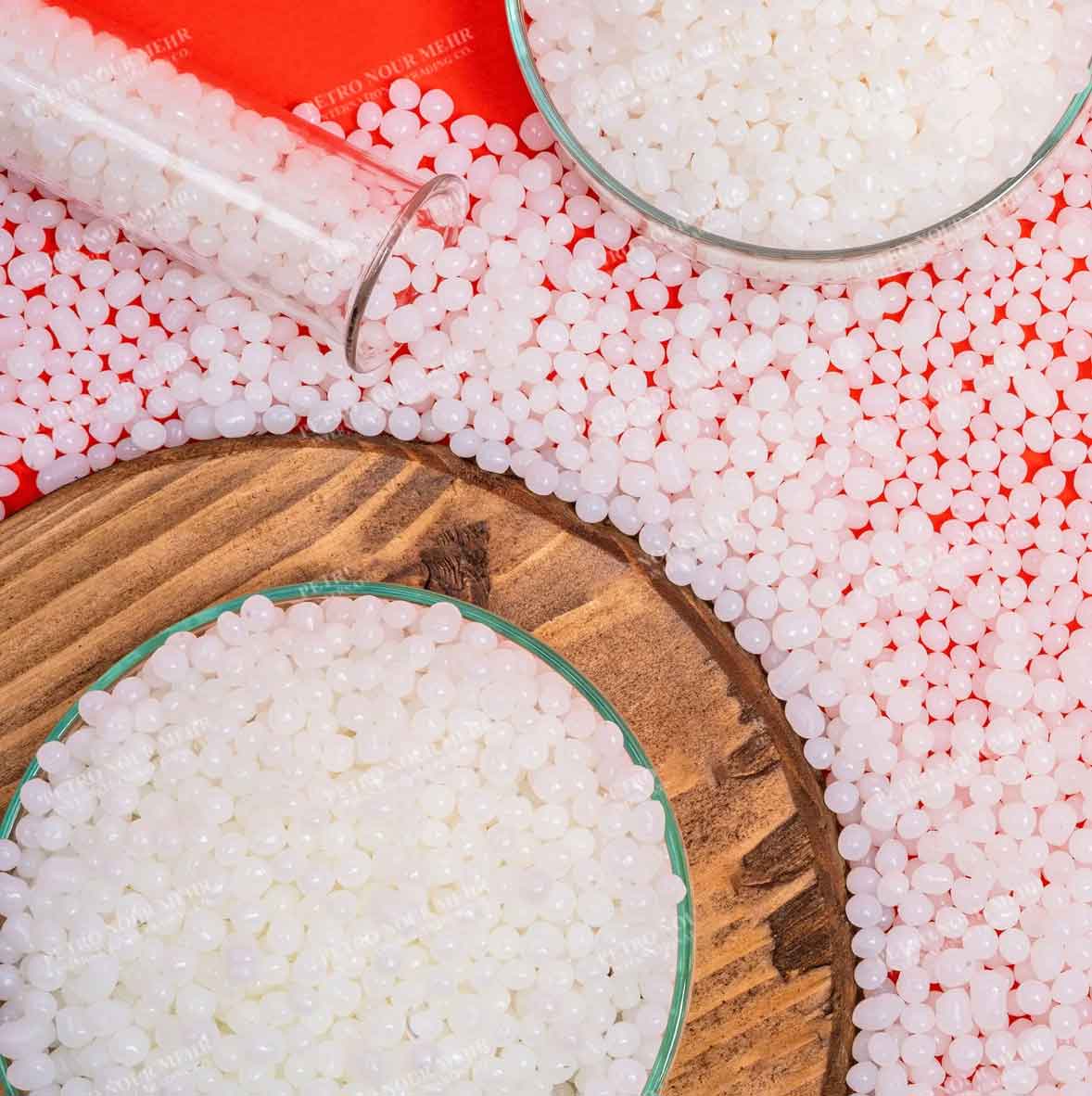
PVC Manufacturers in Iran
Arvand, Bandar Imam, Ghadir Petrochemicals and other domestic factories are producers of this polymer material in Iran.
These units are among the largest PVC producers in Iran and play a significant role in supplying domestic needs and exporting this material to global markets.
PVC Manufacturers Worldwide
Major PVC manufacturers worldwide include:
In the America, there are major manufacturers that produce PVC. Some of these companies include Valiant, Arevon, and Westlake. These companies are actively involved in the production of PVC and its derivative products, playing a significant role in both the American and international markets.
While there are other companies in this industry as well, the aforementioned ones are noted as some of the prominent PVC manufacturers worldwide.
These manufacturers are just a few examples of companies involved in PVC production globally. Additionally, there are numerous other companies in this industry that produce a variety of PVC materials for diverse applications.
Applications of PVC
Polyvinyl chloride (PVC), as one of the most versatile plastics, finds applications across various industries. Some common applications of PVC include:
- Construction Industries: PVC serves as a cost-effective and quality substitute for building materials such as pipes, windows, doors, wall coverings, floorings, and more.

- Automotive Industries: PVC is used as a lightweight and durable material for both interior and exterior components of automobiles, including dashboards, door panels, car upholstery, and automotive tires.

- Packaging and Carton Manufacturing: PVC serves as a film packaging material for various products, including food items, electronics, household goods, and industrial products.

- Hygiene and Medical Industries: PVC is utilized in the production of medical tubes, medical pipes, bottles, catheters, protective coatings, gloves, and other medical equipment.

- Electrical and Electronic Industries: PVC serves as an electrical insulating material in wires and cables, electronic components, coatings for panels and electrical cabinets, and other electronic industry products.

- Toy Manufacturing: PVC is used in the production of toys, skateboards, balls, floor materials, and various recreational and play items.
- Agricultural Applications: PVC is used in the production of pipes and drip irrigation equipment, irrigation systems, greenhouse coverings, and other agricultural tools.
These are just a few examples of the extensive applications of PVC, which is widely utilized as a multipurpose plastic material across various industries.
Storage Conditions for PVC
This grade can be stored under various conditions, but there are some guidelines for better preservation of its quality:
- It is ideal to keep these materials dry and cool; a temperature of less than 30 is preferable for storage.
- Keep this polymer material out of direct sunlight and ultraviolet light, since these sources of light may alter its chemical and physical characteristics.
- These substances react with acids and solvents, among other compounds. It is therefore recommended to stay away from direct contact with these kinds of compounds.
- During storage and transportation, ensure that this material is protected from scratches and impacts, as physical damages can lead to changes in its structure and mechanical properties.
- Packaging for this grade should be made of suitable material to protect it from environmental changes and reduce the penetration of water and air into the packaging.
- Certain items can need particular storage conditions. Consult the manufacturer’s directions in this situation.
Packaging for PVC
To package and export PVC powder, various methods can be employed depending on environmental conditions, product requirements, and transportation facilitation for export. Below are some common methods for packaging and exporting these polymer powder:
Packaging in Jumbo Bags: This is a common method for packaging PVC powder, where the powder are packed in large bags with varying capacities (usually between 500 to 2000 kilograms). These bags protect the product from contamination and moisture and are suitable for road, sea, and air transport.
Packaging in Small Bags: In this method, the PVC powder are packed in smaller bags with a capacity of around 25 to 50 kilograms. These bags are used for local shops and markets or for small shipments.
Using Pallets: PVC powder are often packaged on large pallets. This method is utilized for transportation purposes.
Adhering to international standards for packaging, labeling, and transportation conditions is crucial in selecting the appropriate method for packaging and exporting PVC powder.
Additionally, it is important to ensure product protection against shocks, moisture, and environmental damage during transportation.
Advantages and Disadvantages of PVC
This polymer material is one of the most widely used plastics in various industries, possessing its own specific advantages and disadvantages:
Advantages:
- Chemical Resistance: PVC is resistant to most chemicals, making it suitable for industrial and commercial applications.
- Thermal Performance: It can operate under various temperatures and has good heat resistance, making it suitable for certain furniture and household applications.
- Moisture Resistance: PVC resists moisture well, making it ideal for use in damp environments such as bathrooms and kitchens.
- Recyclability: This polymer is recyclable, which contributes to its environmental sustainability.
- Cost-Effectiveness: PVC is cheaper than many other materials, including metals and wood.
- High Density and Hardness: It has superior impact resistance and deformation resistance compared to other plastics.
- Tensile Strength: PVC has excellent tensile strength.
- Chemical and Alkaline Resistance: It is highly resistant to chemicals and alkalis.
Disadvantages:
- Harmful Emissions: During production and burning, PVC releases hazardous gases such as carbon dioxide and hydrochloric acid, which can harm the environment and human health.
- Complex Recycling Process: Although recyclable, the recycling process is often complex and requires specialized technologies to repurpose it into new applications.
- Heat Sensitivity: PVC is sensitive to heat and may experience issues with shape and deformation at high temperatures.
- UV Vulnerability: It is typically susceptible to UV light, which can degrade its quality and durability. Therefore, protective coatings are necessary for outdoor use.
- Thermal Stability: It has poor thermal stability, requiring stabilizing additives during high-temperature processing.
The advantages and disadvantages of PVC can vary depending on the specific application and environmental conditions.
Overall, the benefits of polyvinyl chloride (PVC) include its easy accessibility and relatively low cost, high density, superior hardness and impact resistance compared to other plastics, excellent tensile strength, and resistance to chemicals and alkalis.
However, its drawbacks include poor thermal stability, necessitating stabilizers at high temperatures during production. Additionally, when burning or melting, PVC releases harmful gases such as carbon monoxide and carbon dioxide, which is considered a significant disadvantage.
Physical and Chemical Properties of PVC:
Polyvinyl chloride (PVC) is a significant polymer in the industry due to its unique physical and chemical properties. Below are some of these properties:
- Density: PVC has a density of about 1.3 to 1.4 gr/cm3 indicating its high molecular weight.
- Mechanical Strength: This polymer has relatively good mechanical strength, but these properties can be altered by adding plasticizers or reinforcements.
- Thermal Resistance: PVC is stable at normal temperatures but loses its shape and may soften at high temperatures.
- Electrical Insulation: It has good electrical insulating properties, making it useful in the electronics and electrical industries.
- Chemical Resistance: PVC is resistant to acids, bases, water, and many other chemicals, which broadens its use in various industries.
- Form Variability: PVC is usually produced in solid form but can be modified to be softer or harder by adding plasticizers or reinforcements.
- Chemical Stability: Due to its stable polymer structure, PVC is non-biodegradable under normal environmental conditions.
Overall, polyvinyl chloride, with its combination of physical and chemical properties, serves as a versatile polymer used in various industries, including construction, automotive, and electronics.
Its high density, reasonable mechanical strength, and thermal resistance, combined with its good resistance to acids, bases, and water, and its electrical insulation properties, make it highly valuable. PVC is also recyclable and non-biodegradable under normal conditions, further enhancing its utility and environmental benefits.
Polyvinyl chloride (PVC) stands out due to its high density, reasonable mechanical strength, good thermal resistance, and excellent resistance to chemicals and moisture. It also provides effective electrical insulation and is recyclable, although it is non-biodegradable under normal conditions.
These properties make PVC a versatile polymer widely used in various industries such as construction, automotive, and electronics. Despite its many benefits, the potential release of harmful gases during burning requires careful consideration of its use in fire-prone areas.
Recycling and Environmental Impact
PVC is a fully recyclable polymer. For example, waste PVC used in the manufacture of windows and doors can be repurposed to produce compact pipes used in specific sewage systems. These pipes, owing to their unique properties, are easy to install and environmentally friendly.
They also have high corrosion resistance. While the average lifespan of pipes used in underground systems is estimated at 47 years, PVC pipes can last over a hundred years.
However, it is important to note that PVC releases hydrogen chloride (HCl) gas when burned, which can be harmful to human health. Therefore, PVC is not recommended for use in areas with a high risk of fire.
Types of PVC grades:
Polymeric materials are classified based on a criterion called the K value. This criterion, defined for PVC resin, describes the lengths of polymer chains with values ranging from 35 to 80. Polymers with lower K values have easier processing but exhibit weaker physical properties.
Conversely, polymers with higher K values have more challenging processing but offer superior properties.
Standard grades of PVC used for thermoplastic processes are typically produced via the suspension method. The K values of these grades range from 57 to 73, which are suitable for most applications. Lower K values, between 57 and 60, are suitable for producing rigid films and thin profiles, as well as injection molding. Higher K values are used for manufacturing pipes and building profiles.
Polymers with K values equal to or greater than 70 are used in flexible products.
Polyvinyl chloride (PVC) is available in various types for different purposes in the market, including:
- Hard PVC: Recognized as one of the stable and durable types of PVC, hard PVC is used for making pipes, wall coverings, windows and doors, building structures, and other objects requiring hardness and strength.
- Soft PVC: Soft PVC, made by adding plasticizers to hard PVC, becomes more flexible. This type of polymer is used for producing soft pipes, plastic films, packaging coatings, children’s toys, and other applications requiring flexibility.
- White PVC: White PVC, usually containing lubricants, is used to produce products requiring white or bright color, including pipes, windows, medical containers, and food-related items.
- Transparent PVC: Transparent PVC, often containing plasticizers, is used for producing transparent and smooth products such as transparent pipes, packaging, protective coatings, and other items requiring clear visibility.
- Food-Grade PVC: Food-grade PVC, usually containing preservatives, is used for producing products in contact with food, including pipes, bottles, food packaging, and similar items.
These types of PVC are just a few examples of the extensive uses of this polymer. Technological advancements may lead to the creation of other types of this polymeric material.
- Buy from a reputable and authorized supplier that holds necessary certifications and guarantees quality.
- Compare the prices of these materials in different markets and compare them with the global market price.
- Examine the sales conditions regarding quantity, delivery time, packaging, transportation methods, and payment terms.
- If you intend to import polystyrene from foreign countries, investigate customs and legal regulations and comply with export and import regulations.
- Contact bravopolymer to obtain the most suitable export price based on your conditions.
- After signing the contract, you can place your order.
- Secure and suitable payment methods according to customer preferences are provided by the company.
- Then, the loading stage is completed by selecting and introducing a transport company.
- Necessary documents for customs clearance at the destination city are also provided to customers by bravopolymer.
The largest distributor of polymers in the Middle East



